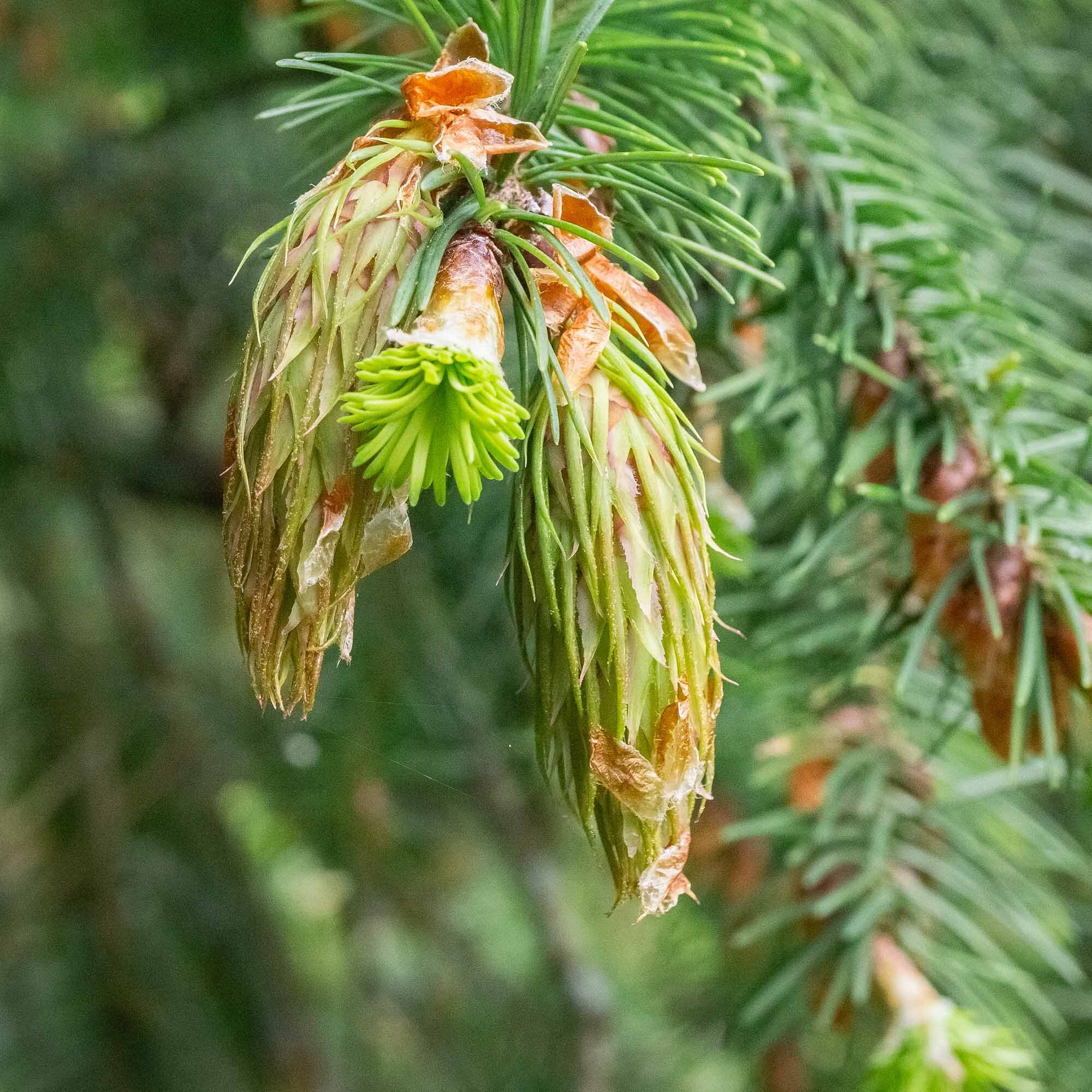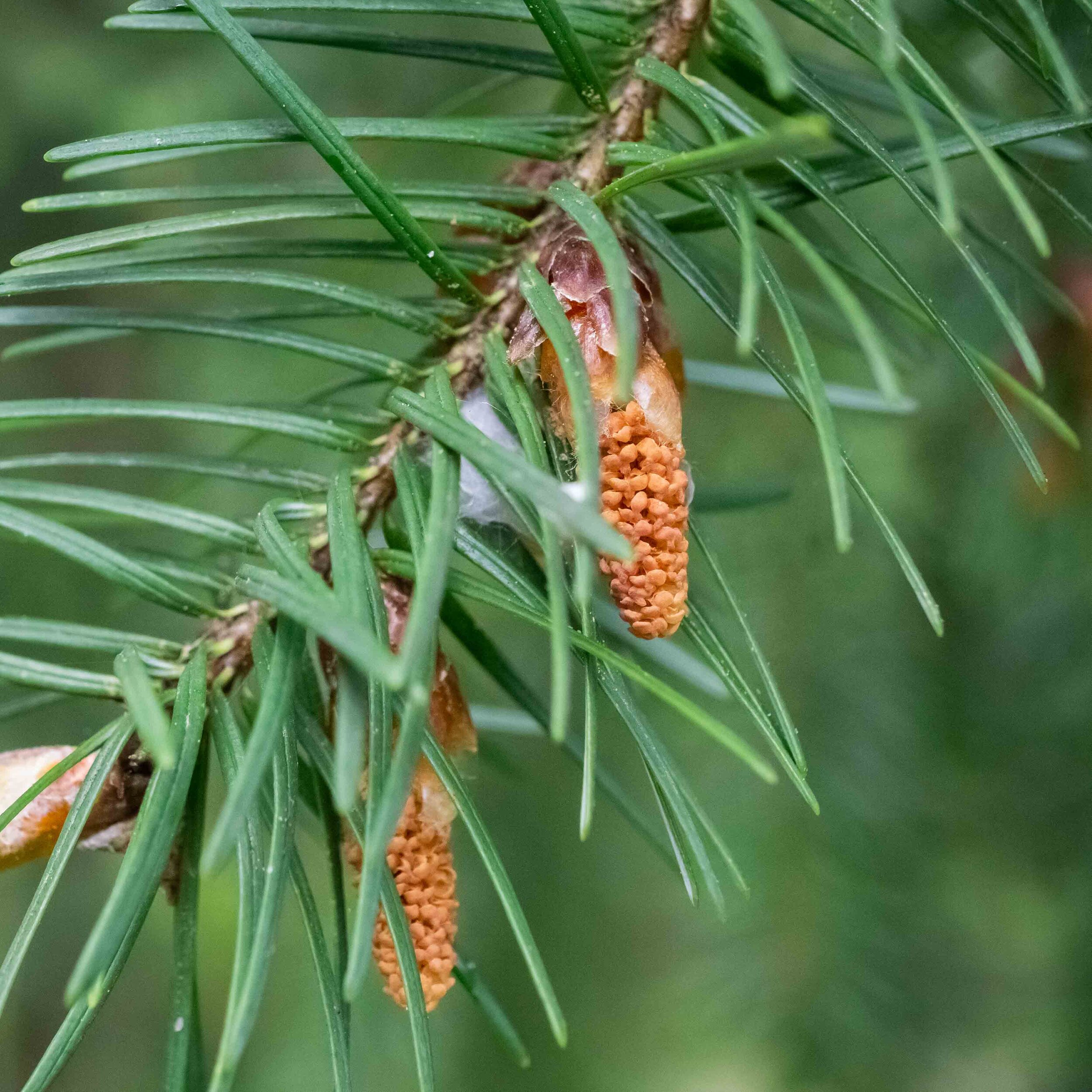In 2019, I saw not a single new, green Douglas-fir cone in my neck of the woods. There were plenty of brown cones lying on the ground or dangling from tree branches, left over from prior years. But no new, green ones.
In 2020, they’re back! Here is what new, green Douglas-fir cones look like right now.
This picture shows two new, green cones, tucked behind a bud that’s bursting with new needles. The insides of these green cones are where new seeds are developing.
The cone production of Douglas-firs, Pseudotsuga menziesii, varies from year to year in irregular cycles. Typically, there is a bumper crop of cones (a “mast year”) every 5 to 7 years. In between, there are smaller crops; and in some years, no cones at all.
Interestingly, the entire forest is synced to the same cycle. Thus, a forest of Douglas-firs produces either
many cones,
lesser numbers of cones, or
no cones at all,
with the various trees acting more-or-less in unison.
Here’s an example: Last year, no matter where I traveled in the Pacific NW (with one exception), I saw not a single new, green Douglas-fir cone. And I looking hard, too. The one exception was Lopez Island, where I did see new cones. I suppose Lopez Island is geographically separated enough that the Douglas-firs there march to their own drummer.
This leads to two good questions: First, why do Douglas-firs (and other trees) have synchronized cone-production cycles? Second, how do trees synchronize their cone-production cycles?
First, as to why trees synchronize, scientists are not yet sure. Here is one reasonable explanation: Low-seed years are the same for an entire forest, which keeps in check the population of seed-eating rodents. Likewise, the mast year is the same for the entire forest, which overwhelms the rodents and helps to ensure that some seeds go uneaten and can germinate.
[Did you notice fewer Douglas squirrels last year, in 2019? I did. These squirrels will be glad that Douglas-fir seeds are back in 2020.]
Second, as to how trees synchronize, scientists again are not yet sure. Are the trees separately responding to an environmental stimulus that is the same throughout the forest? If not, are the trees communicating their reproductive plans with each other—for example, by chemical signals that travel through the ground or air?
[In the last 25 years, research has revealed that trees do in fact communicate with each other. It is not yet known whether this is how they synchronize seed production.]
* * * * * * *
Douglas-firs and other Pacific NW conifers bear two types of cones: (i) seed cones, sometimes called female cones, and (ii) pollen cones, sometimes called male cones.
Seed cones are the ones shown in the picture above. Pollen cones are shown in the picture below. Pollen cones are tiny in comparison to seed cones.
On Douglas-firs and most other conifers in the Pacific NW, seed cones and pollen cones grow on the same tree and potentially on the same branch.
Pollen cones on Douglas-firs produce clouds of fine, yellow, pollen grains. Douglas-firs released their pollen a couple of weeks ago where I live. The pollen cones are empty now. They will soon fall off.
Press here for more info about cones.


